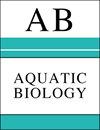Spatial environmental heterogeneity may drive functional trait variation in Hydrocotyle vulgaris (Araliaceae), an invasive aquatic plant
IF 0.8
4区 生物学
Q3 MARINE & FRESHWATER BIOLOGY
引用次数: 3
Abstract
Invasive aquatic plants have the potential to threaten ecosystem stability and bio diversity in non-native ranges; it is therefore necessary to prevent and control such invasions. While environmental heterogeneity might drive functional trait variation in plant species across different spatial scales, the drivers of trait variation over a large spatial scale are not well understood for aquatic invasive plants. Understanding functional trait variation across space and potential environmental drivers might improve our understanding of habitable conditions for predicting where an invasive plant species might be found. Here, we studied Hydrocotyle vulgaris (Araliaceae) in Zhejiang Province, China, and propose that environmental spatial heterogeneity might drive functional trait variation of this invasive aquatic plant over a large scale. The investigation was conducted across 99 plots at 7 sites with H. vulgaris. We found significant variation in functional traits over a large scale, and these functional traits were significantly different across a variety of environmental conditions. Specifically, there were significant relationships between environmental factors (i.e. temperature, precipitation, solar radiation, and water vapor pressure) and functional traits, including specific leaf area, interval length, and specific interval length, indicating that spatial environmental heterogeneity might drive the variation in functional traits (especially leaf and clonal traits) of H. vulgaris, over a large spatial scale. Our study thus provides new insights into understanding the invasiveness of H. vulgaris.空间环境异质性可能驱动外来入侵水生植物寻常水子叶(Hydrocotyle vulgaris)功能性状的变异
入侵水生植物有可能威胁到非原生地区的生态系统稳定性和生物多样性;因此,有必要防止和控制这种入侵。虽然环境异质性可能驱动植物物种在不同空间尺度上的功能性状变异,但对水生入侵植物在大空间尺度上的性状变异驱动机制尚不清楚。了解跨空间的功能性状变化和潜在的环境驱动因素可能会提高我们对可居住条件的理解,从而预测入侵植物物种可能在哪里发现。本文以浙江五加科水生水生植物水子叶(Hydrocotyle vulgaris)为研究对象,提出环境空间异质性可能在大尺度上驱动这种入侵水生植物功能性状的变异。调查共在7个地点的99个样地进行。我们发现,在大范围内,这些功能性状存在显著差异,并且这些功能性状在各种环境条件下存在显著差异。具体而言,环境因子(温度、降水、太阳辐射和水汽压)与比叶面积、间隔长和比间隔长等功能性状之间存在显著的相关关系,表明空间环境异质性可能在大空间尺度上驱动了水杨功能性状(尤其是叶片和无性系性状)的变异。因此,我们的研究为理解普通水蛭的入侵性提供了新的见解。
本文章由计算机程序翻译,如有差异,请以英文原文为准。
求助全文
约1分钟内获得全文
求助全文
来源期刊

Aquatic Biology
生物-海洋与淡水生物学
CiteScore
2.70
自引率
0.00%
发文量
7
审稿时长
3 months
期刊介绍:
AB publishes rigorously refereed and carefully selected Feature Articles, Research Articles, Reviews and Notes, as well as Comments/Reply Comments (for details see MEPS 228:1), Theme Sections, Opinion Pieces (previously called ''As I See It'') (for details consult the Guidelines for Authors) concerned with the biology, physiology, biochemistry and genetics (including the ’omics‘) of all aquatic organisms under laboratory and field conditions, and at all levels of organisation and investigation. Areas covered include:
-Biological aspects of biota: Evolution and speciation; life histories; biodiversity, biogeography and phylogeography; population genetics; biological connectedness between marine and freshwater biota; paleobiology of aquatic environments; invasive species.
-Biochemical and physiological aspects of aquatic life; synthesis and conversion of organic matter (mechanisms of auto- and heterotrophy, digestion, respiration, nutrition); thermo-, ion, osmo- and volume-regulation; stress and stress resistance; metabolism and energy budgets; non-genetic and genetic adaptation.
-Species interactions: Environment–organism and organism–organism interrelationships; predation: defenses (physical and chemical); symbioses.
-Molecular biology of aquatic life.
-Behavior: Orientation in space and time; migrations; feeding and reproductive behavior; agonistic behavior.
-Toxicology and water-quality effects on organisms; anthropogenic impacts on aquatic biota (e.g. pollution, fisheries); stream regulation and restoration.
-Theoretical biology: mathematical modelling of biological processes and species interactions.
-Methodology and equipment employed in aquatic biological research; underwater exploration and experimentation.
-Exploitation of aquatic biota: Fisheries; cultivation of aquatic organisms: use, management, protection and conservation of living aquatic resources.
-Reproduction and development in marine, brackish and freshwater organisms
 求助内容:
求助内容: 应助结果提醒方式:
应助结果提醒方式:


